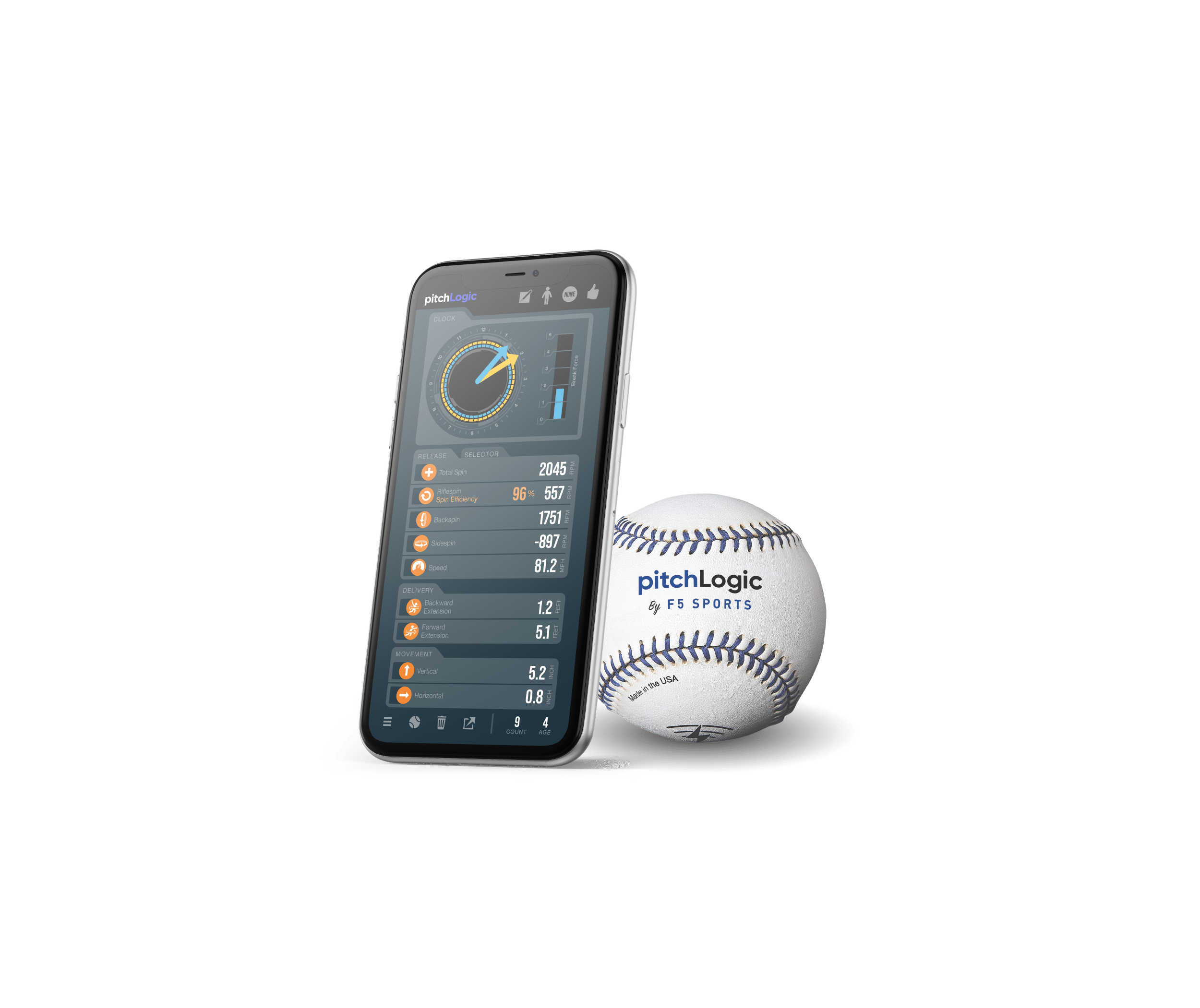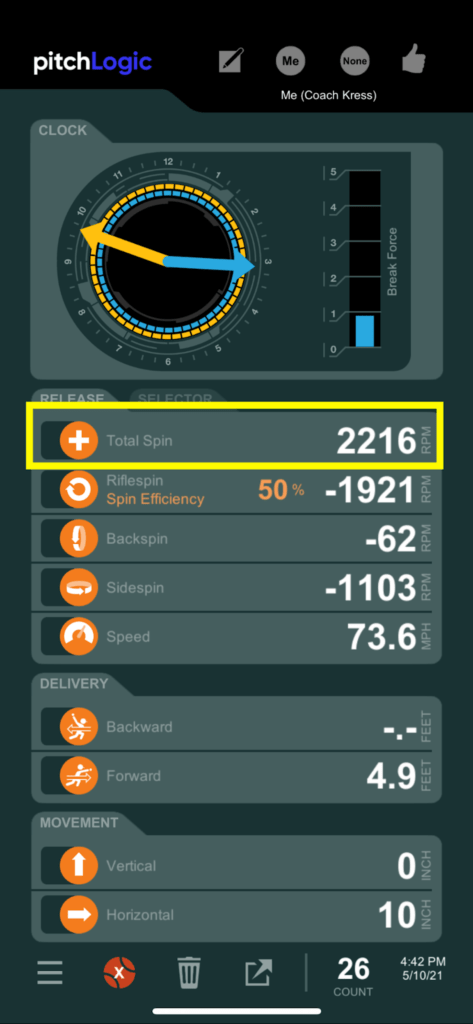Using PitchLogic in Bullpens

By Matthew Kress, Pitching Trainer
As technology becomes ever so present in our day-to-day lives, baseball has also seen a boom in technological advances. These days with a simple click of a few buttons, you can go online and see your favorite player’s avg velocity, sprint speed, or even exit velocity. With the help of technology like Hawkeye and Trackman, all this and even more is possible. New lower-cost technologies, such as PitchLogic, have brought more information into the amateur market. Using technology to change pitches has led to the process that many within the pitching community have coined “pitch design.”
So what is pitch design?
Pitch Design is a process where pitches are tested, evaluated, and adjusted in real-time using technology. That can include slow-motion cameras, radar guns, and ball flight tracking units like Rapsodo or Trackman. Using these pieces can cost coaches a significant amount of money.
Therefore this begs the question: What if you have a tight budget and want quantitative feedback to aid player development?
PitchLogic and Driveline Baseball
In partnership with pitchLogic, Driveline Baseball has teamed up to try and solve this problem for players around the globe.
PitchLogic is a “smart” baseball that uses an inertial movement unit (IMU) to track ball flight metrics for its users. The most profound advantage to using pitchLogic comes in its cost.
Athletes new to Driveline baseball online training will gain access to a pitchLogic baseball at no additional charge between August 1 thru August 31, 2022.
Existing members within Driveline Online Pitching or Driveline Online Two-Way Training can get their hands on a pitchLogic “smart” baseball by either:
- Committing to an additional six months of Online Training at no additional charge.
- Upgrading to the Driveline Advantage Plan will qualify them to receive a pitchLogic ball at no additional cost.
The combination of TRAQ and pitchLogic allows remote athletes to access reports that contextualize how they rank against their peers and help them improve their arsenals.
Differences Between Pitch Tracking Technologies

Often people will ask about how each system ends up tracking these metrics. A simplistic way of viewing this comes in understanding observed and inferred ball flight metrics.
Observed ball flight metrics are seen during a pitch’s flight towards the plate. These are found on units like Trackman that use Doppler radar technology to track an object’s path. These are similar to the technology that tracks a plane’s flight trajectory at an airport.
On the other hand, units that use inferred ball flight metrics take a snapshot of ball flight at release and infer what movement and spin metrics the pitch would achieve. This is seen in units like Rapsodo.
When it comes to pitchLogic, the unit uses an Inertial movement unit that displays the amount of force put onto the pitch. Samford’s Center of Sports Analytics’ initial testing of the pitchLogic showed promising results compared to Rapsodo’s 2.0 pitching unit.
Metrics Comparison
PitchLogic has three different subscription tiers that give you more information about what is going on during ball flight. To understand what kind of feedback this piece of technology provides, we will look into the basic package.
Total Spin

Total spin accounts for all the revolutions per minute (RPM) imparted on the baseball. This can include backspin, sidespin, and gyroscopic spin.
Spin Efficiency
Spin efficiency tells us what percentage of total spin can be contributed to the movement. For example, in 2021, the pitch type that employed the highest spin efficiency on average was the fastball. On the other hand, breaking balls like sliders and curveballs have lower spin efficiency.
Speed
Speed is equivalent to a pitches velocity out of their hand. As you can see, since 2002, velocity has consistently trended upwards according to our Pitching Analytics 101 Course.
Movement
Lastly, pitch Logic also allows users to see short-form movement metrics.
Improving a Fastball with PitchLogic
Now that we know what metrics these technologies can provide users, we can focus on best-use situations.
The most common issue that coaches run into can come from athletes inadvertently cutting their four-seam fastballs. To identify this, pitchers can check the spin efficiency on the pitch. Any fastball that registers below 85% spin efficiency is considered to have an element of “cut.”
In gym, we begin diagnosing this issue in a few different ways. First, we want to check what type of fastball grip an athlete uses. For example, when athletes start training in gym, we run an assessment on their grips. Using our database of grips, we can categorize athletes into each bucket and understand what characteristics become more likely with each grip.
A trend we see with FF 3 “wide” grip is a bias towards cutting the baseball.
Coaches can also use cues to try and elicit more efficiency from the fastball. Some of the most common cues include:
- “Pronate earlier”
- “Think Change up”
- “Behind the baseball.”
In Conclusion
The overarching theme surrounding pitch design is getting feedback on what is happening during ball-flight. Whether that is a college/high school team looking for an edge up on their competition or a curious athlete looking to refine their arsenal. With the power of data in your hands, you can make real-time adjustments to aid the development of players of all ages.
If you’re looking to run reports with Pitchlogic, check out Driveline TRAQ, where you can pair your PitchLogic account with your TRAQ account to create pitch charts.
Comment section